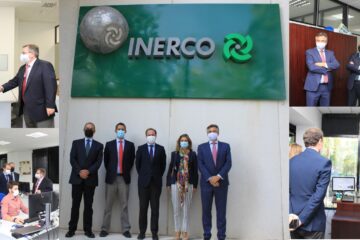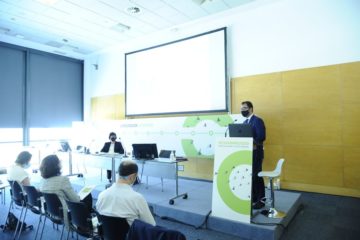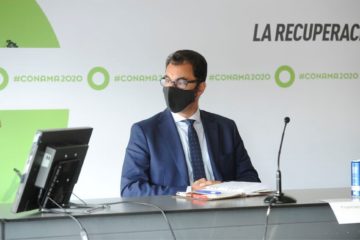Complete decarbonisation of the economy: A Reasonable target?

It is surprising the way that in recent days and with greater intensity since COP21, we have seen the status of universal axiom [1] conferred onto an apparently demonstrated biunivocal correlation, which shows a strangely precise mathematical relationship between the concentration of CO2 in the atmosphere and the rise in the average (?) temperature of the planet, expressed down to the hundredths of a degree Celsius.
Far be it from me to challenge that relationship in this court, lest I be sentenced to burn at the stake (running on biomass, of course) for heresy, especially with Pope Francis’ last Encyclical consecrating the subject. The fundamental issue here is that at the root of the paradigm [2] that it is necessary to decarbonise the world economy in order to mitigate climate change, developed and developing countries will have to take on extraordinary technological and economic challenges. In this sense, the EU’s energy framework strategy [3] declares the necessity of “moving away from an economy driven by fossil fuels (…) and which relies on old technologies and outdated business models.”
This is precisely the approach that some countries wanted to see reflected in the COP21 agreements. The aim is not simply to move toward a low carbon economy, but to reach zero net emissions in the latter half of this century. In order to do this, it is necessary to do away with oil, coal and natural gas, which currently satisfy over 80% of the worldwide primary energy demand; this would be a technological revolution and unprecedented challenge.
Achieving the EU objective of CO2-free electricity production in the bloc by 2050 bypasses exclusively reliance on non-manageable renewable energies with no capacity for large-scale electricity storage. It is necessary to maintain and even to increase nuclear capacity and to make carbon capture and storage an economically competitive reality. Distributed, grid-connected photovoltaic generation should evidently also be included, in addition to other renewables that already achieve grid parity. It is very likely that the EU’s reference to an “outdated model” refers to redefining the roles of actors in the European electricity market.
In air and heavy road transport, we do not appear to be close to achieving decarbonisation. Biofuels will continue to represent a marginal fraction of demand until second- and third-generation solutions (accounting for all their environmental effects) are competitive. In light transport, it appears that investment in infrastructure for all vehicles to be electric should not be carried out immediately on a large scale until storage technology allows for greater autonomy and shorter recharging times.
Carbon dioxide emissions are an integral part of refining, metals and cement production industry processes. For this reason, the meaningful penetration of renewables is inconceivable. Fuel changeovers and energy efficiency measures can and are being implemented to reduce CO2 emissions per unit produced, but this industry can not stop producing CO2. The only alternatives left by the scenario of complete decarbonisation would be carbon capture (never 100%) or total relocation to non-adhering countries. In this last situation, CO2 emissions would simply emigrate.
Based on the above, does it make sense to leave the subsoil full of unexploited resources of exceptional energy density and for which new production techniques are revolutionising the market, and to oblige traditional producers to lower their prices, making competition more difficult for renewables? Is it not more reasonable to make the necessary technology competitive so that it may be used without emitting CO2?
It is evidently sensible to incentivise R&D&i for technologies with smaller carbon footprints for the transformation and use of primary and final energy. However, it is not advisable to carry out a mass installation of technology that is in the early stages of its learning curve and apply market-distorting measures with costs being borne by users. Early adopters assume enormously expensive risks, and Spain is no exception to this.
The scenario of complete decarbonisation will have highly significant effects on energy-related aspects of geopolitics. Norway, a country with a very “green” image, and the countries of the Persian Gulf, Russia and Brazil, among others, will request compensation for oil and gas, with Australia, South Africa, China, Russia and Colombia doing the same for coal. The US is another story, for a multitude of reasons.
Dispensing with fossil fuels, and for other reasons with nuclear, will have huge effects on heavy industry and capital assets. Less steel will be necessary for production and transformation facilities, and oil, methane and natural gas infrastructure will no longer be needed. But more concrete, special glass, composites and rare earths will be required.
Finally, there is the transfer of technology from developed to developing countries, a very significant barrier. The Paris Agreement proposes that financial resources be provided to meet, among other needs, the cost to developing countries of accessing “environmentally suitable” technologies in early stages of development.
The result of this is that first-world countries will assume the costs of transforming their own energy systems, of compensating fossil-fuel producing countries, of payments for climate-related catastrophes and of providing immature technologies to developing countries.
Who wins? Certain proponents of decarbonisation and many of the main actors, certainly. And, I hope, the Earth as well.
PROF. VICENTE J. CORTÉS, INERCO PRESIDENT
(Source: ‘El Economista’ Energy Special)
[1] A proposition so clear and evident that it is accepted without demonstration.
[2] A theory or set of ideas whose central premise is accepted unquestioningly and which constitutes the basis and model for solving problems.
[3] Communcation from the Commission. A Framework Strategy for a Resilient Energy Union with a Forward-Looking Climate Cange Policy. COM(2015) 80 final 25.2.2015






No Comment